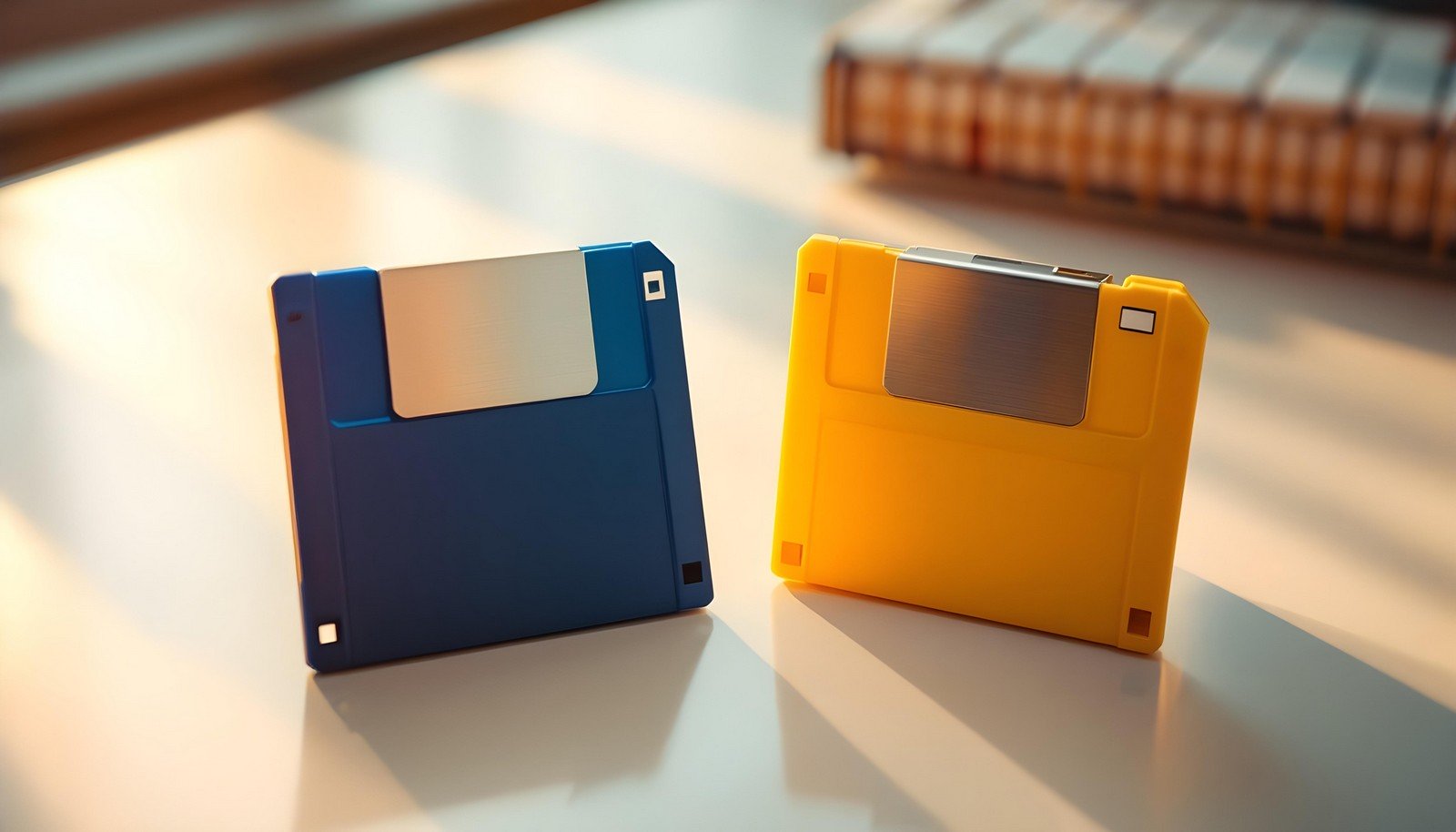Floppy Disk

Quick Navigation:
- Floppy Disk Definition
- Floppy Disk Explained Easy
- Floppy Disk Origin
- Floppy Disk Etymology
- Floppy Disk Usage Trends
- Floppy Disk Usage
- Floppy Disk Examples in Context
- Floppy Disk FAQ
- Floppy Disk Related Words
Floppy Disk Definition
A floppy disk is a magnetic storage medium encased in a square plastic shell, used for storing and retrieving digital data. Initially introduced in the late 1960s by IBM, floppy disks became widely used throughout the 1980s and 1990s. Available in various sizes, such as 8-inch, 5.25-inch, and 3.5-inch formats, they offered storage capacities ranging from a few hundred kilobytes to several megabytes. Data on a floppy disk is written and read by a disk drive, making it a critical tool for data transfer and backup before the advent of CDs and flash drives.
Floppy Disk Explained Easy
Imagine a floppy disk as a tiny, portable bookshelf where you can store and retrieve your favorite stories or photos. It’s like saving your drawings on a piece of paper, except the floppy disk lets you use a computer to store or open them again later.
Floppy Disk Origin
Floppy disks were first developed by IBM in the late 1960s as a portable, reusable storage solution for computer systems. Their small size and low cost made them popular tools for data sharing and software distribution in their prime.
Floppy Disk Etymology
The term “floppy” comes from the flexible, disk-shaped magnetic storage medium inside the protective casing.
Floppy Disk Usage Trends
Floppy disks saw peak usage in the 1980s and 1990s for personal and professional computing. By the early 2000s, they were gradually replaced by more durable and higher-capacity storage solutions like USB drives and cloud storage.
Floppy Disk Usage
- Formal/Technical Tagging:
- Data Storage
- Legacy Computing
- Magnetic Media - Typical Collocations:
- "Insert the floppy disk"
- "Floppy disk drive"
- "Save files on a floppy disk"
- "Floppy disk format"
Floppy Disk Examples in Context
- The software was distributed to customers on a 3.5-inch floppy disk.
- Early computers required a floppy disk to boot up the operating system.
- The project files were backed up onto a stack of 5.25-inch floppy disks.
Floppy Disk FAQ
- What is a floppy disk?
A floppy disk is a portable storage device used to save and retrieve digital data, common in the 20th century. - Why is it called a floppy disk?
The name comes from the flexible magnetic storage medium inside the hard plastic casing. - When was the floppy disk invented?
It was developed by IBM in the late 1960s. - What were the common sizes of floppy disks?
Common sizes included 8-inch, 5.25-inch, and 3.5-inch formats. - How much data can a floppy disk store?
Depending on the size, storage ranged from 80 KB to 1.44 MB. - Are floppy disks still used today?
They are mostly obsolete but may still be used in specialized legacy systems. - What replaced floppy disks?
USB flash drives, CDs, and cloud storage replaced floppy disks. - What is a floppy disk drive?
It’s a device used to read and write data to a floppy disk. - Can I still read old floppy disks?
Specialized drives and adapters may be used to access floppy disk data. - Were floppy disks reliable?
They were reliable for their time but prone to physical damage and data loss.
Floppy Disk Related Words
- Categories/Topics:
- Data Storage History
- Legacy Computer Hardware
- Portable Storage Media
Did you know?
The 3.5-inch floppy disk’s iconic save icon is still widely recognized today, even though most people under 30 have never used one!
PicDictionary.com is an online dictionary in pictures. If you have questions or suggestions, please reach out to us on WhatsApp or Twitter.Authors | Arjun Vishnu | @ArjunAndVishnu

I am Vishnu. I like AI, Linux, Single Board Computers, and Cloud Computing. I create the web & video content, and I also write for popular websites.
My younger brother, Arjun handles image & video editing. Together, we run a YouTube Channel that's focused on reviewing gadgets and explaining technology.



Comments powered by CComment